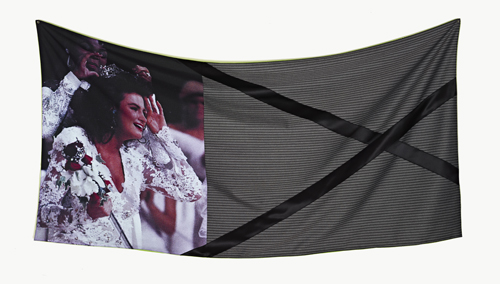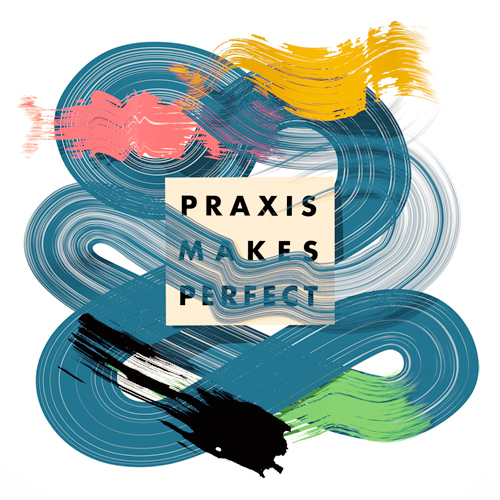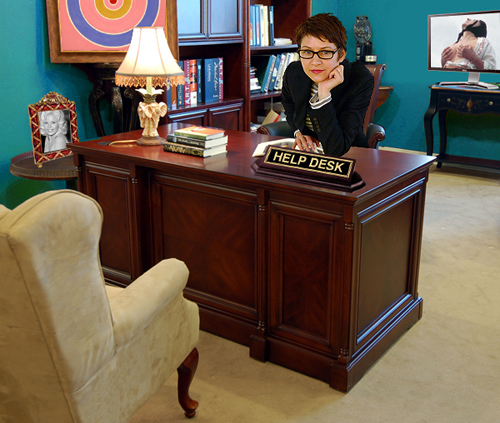Dear Abby and Ann Landers, a new member has joined the club. Welcome artist and writer Bean Gilsdorf, now fielding your art-related questions on her weekly advice column HELP DESK on Daily Serving. For the past several months Gilsdorf has proffered her wisdom in response to the anonymous queries of artists and art professionals that range in focus from the business end of a profession in the arts to more personal matters such as the mental health of artists. If you’ve got questions, Bean Gilsdorf has (or will find) the answers. I chatted with Gilsdorf to inquire about how the art advice column began as well as her practice as an artist and writer.
Jacquelyn Gleisner: I recently discovered HELP DESK on Daily Serving. For people who aren’t familiar with your column, what is HELP DESK?
Bean Gilsdorf: HELP DESK is an arts advice column. I’ll answer any question that has something to do with the arts,
however tangentially. That said, I tend to focus on situational advice so that I can assist people with predicaments that require resolution(s).
JG: How did you get into the business of giving advice?
BG: Oddly enough, I’ve been doing it all my life.
JG: How did the column begin?
BG: I’m pretty sure we’d all had too much wine at a Daily Serving meeting last fall, and I said, “You know what we need? We need an advice column!”

Bean Gilsdorf. "Flag for American Beauty," 2011. Polyester, wool suiting, satin, 33 x 59 inches. Image courtesy of the artist.
JG: What was your motivation in starting this column?
BG: In general, people want a sympathetic ear and some compassion. Making a life as an artist is especially fraught because everything comes down to you: your intellect and energy and time and talent…no one is going to tell you what to make or how to make it, and no one is going to do it for you. While there are a few guideposts, there isn’t really a map. A career in the contemporary fine arts can seem nebulous — just try explaining what you do to a person with one of those well-defined jobs that come with a packet from HR! Sometimes people get into a tangle and they just want someone to help them sort it out. I’m that person.
JG: What is your background?
BG: I think that the salient information here is that I’ve been fingerprinted but never arrested. That’s all anyone needs to know.
JG: What is your personal history of “making, exhibiting, finding, marketing, buying, selling — or any other activity related to — contemporary art?
BG: I started making/exhibiting art professionally in 1998, and I didn’t go to art school for undergrad so of course I reinvented a lot of wheels — but the lessons I’ve learned have been worth it if I can share them with others. Like most artists I know, I find marketing exhausting but wish I did more selling. I’m also a collector. I bought my first piece of original artwork in 2000 and when I have some money that’s what I buy myself for my birthday.
JG: How does your work at HELP DESK impact your own practice as an artist?
BG: I would say it’s the other way around: my practice as an artist impacts my work at HELP DESK because I am or have been in the same position as many of the artists who write in. I can empathize.

Bean Gilsdorf. "Flag for Regarding Flags," 2011. Polyester, wool suiting, satin, 35.5 x 57.5 inches. Image courtesy of the artist.
JG: In addition to HELP DESK, you are also a published writer. How does your writing influence your work as an artist?
BG: I think writing has a profound influence on my practice. In order to write, I have to consider work very carefully and give time to exploring what’s in front of me in a way that’s very focused and directed…more than, say, drifting through the galleries at a museum generally requires. Using language to encapsulate the intellectual and phenomenological experience of looking at art and being with art can be difficult. Writing about art also makes me consider my own assumptions and prejudices. All of this is still functioning in the background when I go to the studio, and it informs the way that I think about my own work.
JG: How do you find the answers to tough questions?
BG: I ask the experts! I’ve written to gallerists, dealers, program directors and other artists to get an informed perspective on some queries, and I haven’t been disappointed yet. Every single person has responded, often with really thoughtful, well-crafted answers, that I know took a long time to write. It’s really gratifying — I never expected such generosity and investment. There’s this idea that the “art world” is cold and disinterested, but I’ve only encountered helpful people who are generally concerned with helping me find the answers.
JG: What have you learned from the column so far?
BG: My biggest revelation has been personal: I’ve become a quintessential California new ager. People send me these difficult questions, “I’ve no talent — my adviser’s an adulterer — I’m starting over again, what should I do?” and I find myself writing about joy and compassion and abundance. My instinct is to help them find a way to move past their problems and continue making. I keep thinking, maybe the next thing this person makes will be brilliant, maybe her next action will create a breakthrough moment. And I hope I’m right. I’m not the misanthrope I pretend to be.
Bean Gilsdorf is an artist and writer for Daily Serving‘s weekly arts-advice column HELP DESK. She lives in San Francisco.
Email your questions to [email protected]. All submissions become the property of Daily Serving, and all will be treated anonymously.

Bean Gilsdorf. "Flag for Kennedys, Before," 2012. Polyester, wool suiting, satin, 36 x 65 inches. Image courtesy of the artist.






Pingback: Help Desk: Burning Bridges | Help Desk